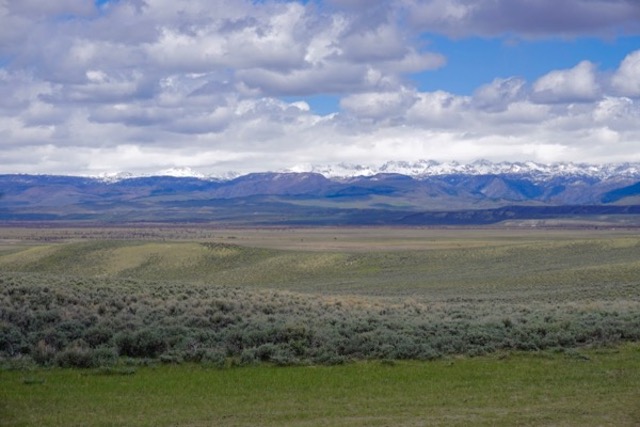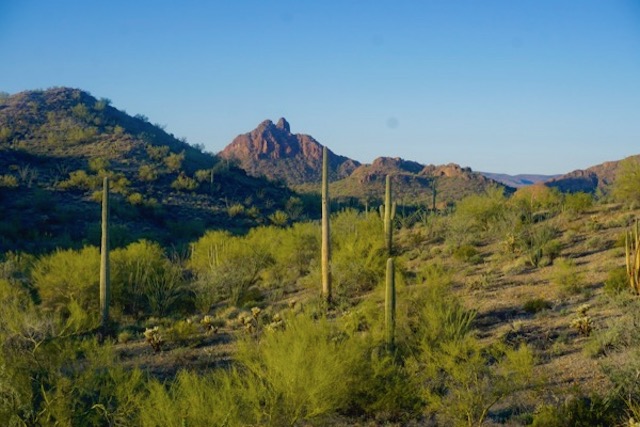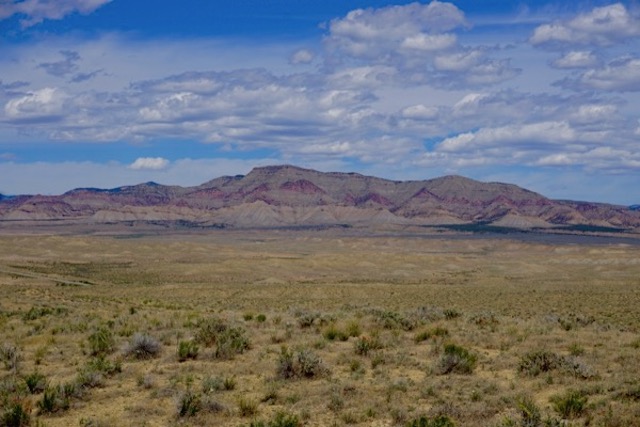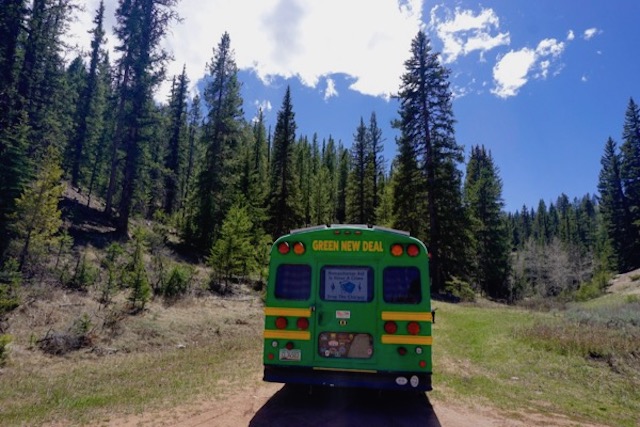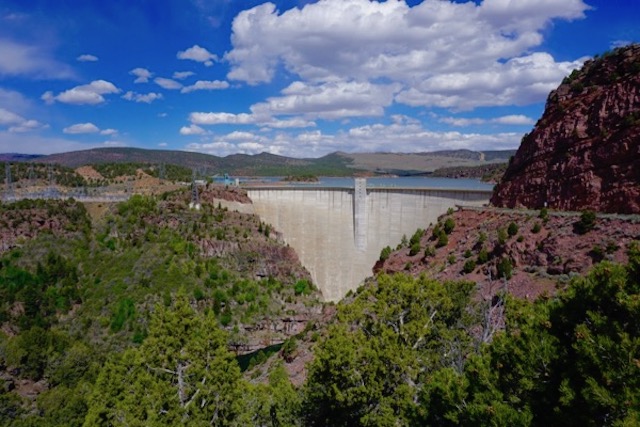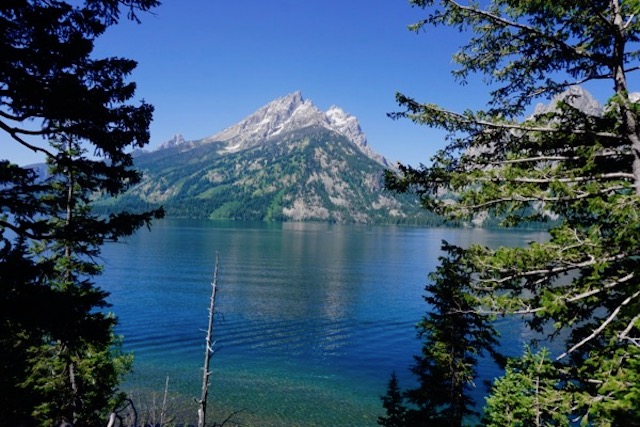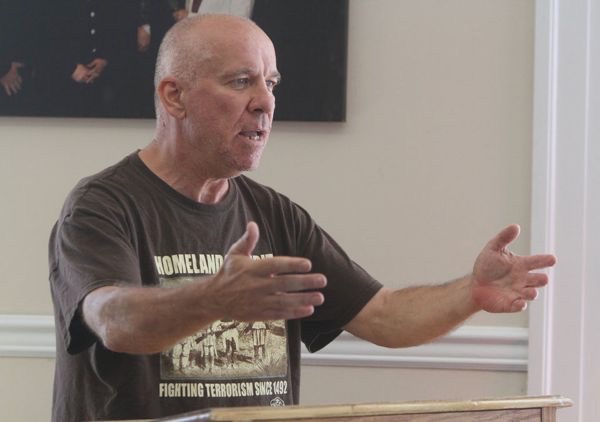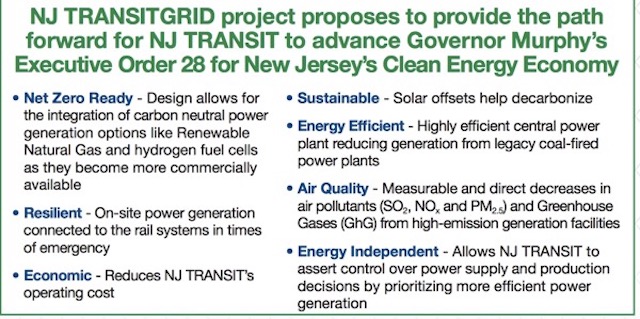“A Natural Gas Success Story”
I Bet Your Never Even Heard Of “Project Wagon Wheel”
The nuclear roots of fracking
Orwell meets Strangelove
[Update: As a perfect illustration of the past as present, meanwhile High Country News reports that the BLM has suspended lease & royalty payments and is encouraging more drilling:
[BLM is] encouraging public-land drilling, despite the continued glut in the global market.
The new policies instruct state offices to let companies apply for lease suspensions and avoid royalty payments, which are the legally mandated taxes on the revenue from resources drilled or mined on public lands. ~~~ end update]
As I randomly wander, it seems I can’t help but find trouble, but this one is unusual, even for my experience.
I left the Ajo Arizona Sonoran desert back in early March, on the first day it hit 100 degrees. We can’t take that kind of heat.
As I meandered up the western Rockies, despite elevation, the heat kept following me, most recently after a few days in the “North Fruita Desert” just northwest of Grand Junction Colorado.
So, I continued north. After a few nights in Ashley National Forest, through Utah’s magnificent Flaming Gorge National Recreation Area and into Wyoming, I began to have thoughts of perhaps spending time in Montana wilderness.
But, instead of heat, I ran into cold, high winds and forecasted snow, so I hunkered down on BLM lands just outside the small town of Pinedale, Wyoming, about 75 miles southwest of the awesome Tetons.
In a round about way, all of which brings me to that “natural gas success story” and “Project Wagon Wheel”.
This morning, after a cold and windy night (and morning), I hiked into the BLM lands. I came across a sign announcing a seasonal winter closure to protect wildlife. I noted the name of the place and came back to the bus to find out about it
I was surprised to learn that this awesome looking place was home of one of the largest gas fields in the world, the “Pinedale AntiCline Oil and Gas Exploration Project Area”.
The area has one of the richest concentrations of natural gas in the United States, currently estimated at more than 14 trillion cubic feet.
But, I was astounded by the cavalier and favorable description of the official Wyoming State history of the project – the “success story”- including this little bit of insanity, dubbed: “Project Wagon Wheel”:
Early attempts
California Oil Company, later named Chevron, first drilled on the Pinedale Anticline in 1939 using rotary tools, state-of-the-art drilling equipment at the time. Working only from the geological clues visible on the earth’s surface, these early oilmen had correctly figured out where to drill. But after drilling 10,000 feet into the earth, they found very little of what they were after — oil. They did, however, find plenty of natural gas. Unfortunately, there was no market for the gas and the company plugged and abandoned the site.
El Paso Gas Company purchased the well but with hopes to drill for gas. In the late 1940s and early 1950s, the company drilled a total of seven wells in the area, all producing limited gas, making the venture an economic failure.
But El Paso made plans to return to the Pinedale Anticline in a big way in 1969, to experiment with detonating nuclear devices to assist with natural gas extraction. This attempt, Project Wagon Wheel, was designed to study the effectiveness of nuclear power to mine natural gas. El Paso geologists knew there was plenty of gas below the anticline, but it was locked tightly in sandstone rock formations that resisted conventional drilling methods. Radioactivity, according to a company report, was not expected to be a problem.
When the citizens of Sublette County learned of the planned nuclear detonation, several of them formed the Wagon Wheel Information Committee to learn more about the project. The group soon committed to educating people and stopping the project. Eventually they succeeded. Determined citizens prevented big industry and the federal government from detonating nuclear devices in their county.
I wonder if that “company report” was written by General Jack D. Ripper.
Well, I guess that makes nuclear bombs officially the precursor of today’s fracking, as documented by the “official history”:
In 1974, the test well that El Paso Natural Gas had drilled for Wagon Wheel was used instead for an attempt at what then was called massive hydraulic fracturing, to crack open the gas-bearing rock by pumping large amounts of water under pressure down the well. The procedure didn’t work and the hole was eventually plugged and never reopened.
The Wyoming historians glowingly describe fracking thusly:
Natural gas in the Jonah Field is “locked” in tight rock formations. To extract the gas, first the well is drilled, and then the formations must be broken down, creating channels for gas to flow. This is accomplished by fracturing (fracking) a formation, when fluid and/or compressed gas is forced at high pressure down the well fracturing the gas-bearing rocks, creating cracks and fissures. These fissures become conduits for gas to flow out of the formation and up the steel pipe set in the well. To keep the formation from closing back on the fissures and resealing the rock, solid material is mixed in the “frack fluid” to prop the channels open. The most commonly used “propant” is sand, or “frack sand.”
No mention of the composition of that “fluid” or the effects of the gas on the climate catastrophe (the more specific and critical history of Project Wagon Wheel does mention fracking chemicals, however).
But, that’s not all. The official history touts this too:
More pipelines, more drilling, more wells
Initially hampering production, however, were limited pipelines, as well as a scarcity of compression facilities, which increase the pressure of gas in pipelines and enable the gas to flow properly. Four-inch pipelines were soon replaced with eight-inch surface pipeline. Then in 1996, a twelve-inch gas line was constructed with a capacity of 100 million cubic feet per day. The following year, a twenty-three-mile, sixteen-inch pipeline was added to connect Williams Field Services, Questar (after 2011, QEP in this area), Western Gas Resources, and FMC pipelines from the Jonah Field to processing facilities at Opal, Granger, and Black Fork, Wyoming. This line increased the daily transportation capacity to 175 million cubic feet.
Aside from a few whining NIMBY neighbors and pin headed elite Ivory Tower sociologists at the University of Wyoming, it’s all good:
Impacts
The Jonah Field rediscovery and successful extraction of natural gas initiated by McMurry Oil Company is heralded as one of the most significant natural gas developments in continental North America in the second half of the twentieth century. Jonah represents a turning point because of the enormous amount of production opened up by the new technologies. McMurry Oil Company’s technical advances in the early 1990s, coupled with higher gas prices and a quick boom in pipeline capacity, allowed it and other companies to lucratively produce gas from a previously inaccessible source. This success led to McMurry Oil Company’s expansion of the nearby Pinedale Anticline field a few years later.
Any effects on wildlife – so critical to hunters and tourism – have been mitigated:
Measures have been taken to try to reduce impacts to wildlife and the environment in the Pinedale Anticline. Gas companies are coordinating their drilling efforts into designated areas for year-round development. These Development Areas (DAs) allow the companies to concentrate their activities and timing in specified areas leaving large blocks of contiguous habitat undisturbed and available to big game and their migration corridors and sage grouse habitat. In an effort to reduce the amount of area disturbed, companies have been clustering their wells onto a single pad and then using directional drilling from the pad, resulting in fewer pads and roads needed for drilling activity. By 2010, this method had allowed 100 fewer needed well pads in the Pinedale Anticline Project Area and 70 percent fewer roads to fully develop the field, leading to less habitat disturbance.
Local air pollution was normalized as “a way of life” that has been monitored and effectively managed, and life goes on:
Sublette County citizens are concerned about the increased water and air pollution connected with the development. Long-time residents noticed a decline in year-round air quality starting in 2000. Air pollution is now a way of life. … Air quality monitoring is now required, with ongoing steps taking place to alleviate the potentially dangerous situation, though “Ozone Alerts” continue.
And there are positive economic benefits:
At the same time, positive impacts from the successful drilling in the Jonah Field and Pinedale Anticline were immediate and far reaching. Millions of tax dollars have been collected as a result of the natural gas production in Sublette County, which have been used for improved infrastructure and community resources. Thousands of jobs have been created for local residents and for those willing to relocate to the area. Industry has also been very generous in volunteering time and donating money to organizations that serve the community. Industry operators have also worked with the Wyoming Game and Fish Department to implement innovative technologies and operational practices that lessen the effect of natural gas operations on the environment.
And the gas industry is rising to the challenges, voluntarily making things better, and without all that government regulation:
Natural gas production continues in 2011, and so too, do many of the problems that came with it. Population growth has slowed somewhat since 2008, however, and the newcomers continue to be served reasonably well by private-sector housing and other services. At the same time, increased tax revenues have allowed local governments to be proactive in building infrastructure, and industry is working to alleviate the problems brought on by the drilling activity. Pipelines, for example, are being built to carry out the condensate now carried by large, dust-raising semi trucks. The BLM and Wyoming Game and Fish monitor the area, and face continued challenges.
Like they say, a real “success story”.
That’s what you get when your benchmark for measuring “success” is avoiding nuclear explosions:
Hydraulic fracturing, done now with a combination of water and other chemicals, is routine today, and has made the Pinedale Anticline and the Jonah Field near Pinedale one of the most productive gas fields in the world. And all without exploding a single atomic device.
War is Peace. Freedom is Slavery. Ignorance is Strength.
